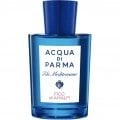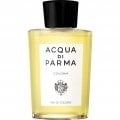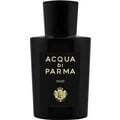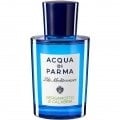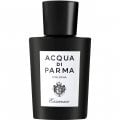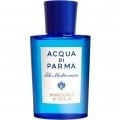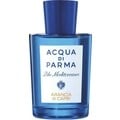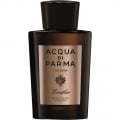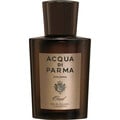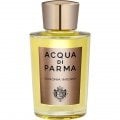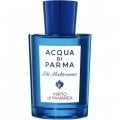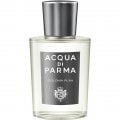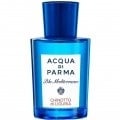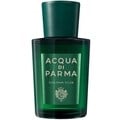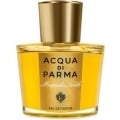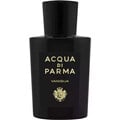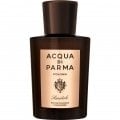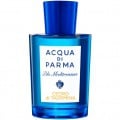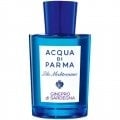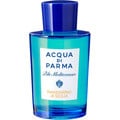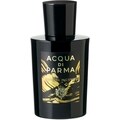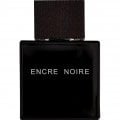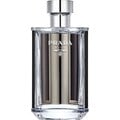05/05/2020

Fittleworth
21 Reviews
Translated
Show original

Fittleworth
Top Review
39
C'era una volta...
The scent of the dark green cypresses has always inspired me.
The slight bitterness that her needles exude refreshes excellently on hot summer days. Especially when this delicately bitter note is subtly interwoven with citrus fruits and subtly with herbal scents.
Lavender, sage, rosemary, basil, lemon, grapefruit and bitter orange are recommended additions that can turn a cypress scent into an unforgettable experience.
The scents of cypresses can transport us to Italy, can make us dream of Tuscany, the Cinque Terre, the Amalfi Coast, the blue Adriatic Sea and white sails under an endless summer sky.
When 'Cipresso di Tosacana' was launched in 1999, there was great enthusiasm.
It was a highlight of the "Blue Mediterraneo" series of the house Acqua di Parma.
Citrusy, unsweet, fresh, surrounded by very subtle woody and earthy dry notes - an Italian dream came true olfactorically.
Herb by the all-dominant cypress, cleverly composed, of enormous durability, with astonishing depth. So quite suitable for hot summer days under the southern sun.
The most beautiful embodiment of Italian lifestyle, captured in a perfume that was a great work of art.
Chapeau, Monsieur Duchafour! Rispetto, signor Duchafour!
Then, all of a sudden, that smell disappeared from the market.
Has been removed from the company's portfolio.
Just like that.
I was angry and could not understand the decision to take such a popular fragrance off the market.
The fragrances advertised as successors, such as Ginepro di Sardegna, were not able to convince me.
They lacked everything that had so excited me about "Cipresso di Tosacana".
But then, in 2018, the Acqua di Parma company decided to relaunch the fragrance.
A pleasant decision, which I nodded approvingly ...
I was looking forward to it too soon, though.
The newly released fragrance has very little in common with the original version. Here and there you can sense the shadows of the former, so successful composition, but these are reliably drowned in a subtle, sweet, unpleasant and permanently present note, which has a lot to do with cream soap and very little with the scent of cypresses.
The top note of the version released in 1999 (I had to search a bit until I found the exact ingredients listed) consisted of the following ingredients: Rosemary, basil, grapefruit and bitter orange A citrusy herbaceous note, which opened the fragrance unsweet, very fresh, almost cool, a little angular and a little tart.
That was great, that was successful, that was Italian in the best sense of the word.
For the reformulated version of 2018, the following elements are given for the top note: Orange, elemi resin, star anise.
This explains the unexpectedly sweet, somewhat sticky top note, which is soft and creamy soapy.
I was unpleasantly surprised A comparison with a remainder of the original scent confirmed my perception - the top notes have nothing, but nothing in common with each other anymore.
Unfortunately this also applies to the heart note.
In the original version of 1999, the following ingredients are listed for the heart note: Pine, coriander, lavender, jasmine, lily of the valley, cardamom.
This heart note was dominated by a wonderful combination of lavender and pine.
That was cool, that was fresh, that was excellent.
In the 2018 version, the following components are specified for the heart note: Lavender, sage, petitgrain.
A comparison shows me that although the heart note of the 2018 reformulated fragrance may claim a distant resemblance to the heart note of the original version - alone, it is not the same. It lacks the depth, the transparency, the lucid freshness of the original. In the reformulated version, everything seems flat, smooth, covered with an indefinable, faint sweetness and, compared to the original version, downright cheap.
Terrifying!
The base note shows me most clearly how much the reformulation has changed.
The following ingredients were specified for the original version of 1999: Cypress, pine, patchouli, vetiver, oakmoss, cedar.
This let the fragrance still fresh but much darker. From the angular top note, the richer heart note to the dark fresh, earthy base, a fragrance was created that was exciting, harmonious and light-footed.
La dolce vita ...
The light, dry earthiness that once so pleasantly rounded off this citrus-fresh fragrance is not even remotely reflected in the reformulated version of 2018.
For the reformulated version of 2018, the following components are listed for the base score: Balsam fir, cypress, pine needle.
It is obvious that one cannot leave out patchouli, vetiver, cedar and especially oakmoss and still hope to create the same scent.
A very complex, wonderfully composed, light-flooded fragrance became a surrogate by omitting many elementary components and adding a few mushy, sweet, soapy notes.
A pleasing, smooth, thinned-out, soul-destroyed surrogate of a once great fragrance.
Why only .. Tempi passati ...
The slight bitterness that her needles exude refreshes excellently on hot summer days. Especially when this delicately bitter note is subtly interwoven with citrus fruits and subtly with herbal scents.
Lavender, sage, rosemary, basil, lemon, grapefruit and bitter orange are recommended additions that can turn a cypress scent into an unforgettable experience.
The scents of cypresses can transport us to Italy, can make us dream of Tuscany, the Cinque Terre, the Amalfi Coast, the blue Adriatic Sea and white sails under an endless summer sky.
When 'Cipresso di Tosacana' was launched in 1999, there was great enthusiasm.
It was a highlight of the "Blue Mediterraneo" series of the house Acqua di Parma.
Citrusy, unsweet, fresh, surrounded by very subtle woody and earthy dry notes - an Italian dream came true olfactorically.
Herb by the all-dominant cypress, cleverly composed, of enormous durability, with astonishing depth. So quite suitable for hot summer days under the southern sun.
The most beautiful embodiment of Italian lifestyle, captured in a perfume that was a great work of art.
Chapeau, Monsieur Duchafour! Rispetto, signor Duchafour!
Then, all of a sudden, that smell disappeared from the market.
Has been removed from the company's portfolio.
Just like that.
I was angry and could not understand the decision to take such a popular fragrance off the market.
The fragrances advertised as successors, such as Ginepro di Sardegna, were not able to convince me.
They lacked everything that had so excited me about "Cipresso di Tosacana".
But then, in 2018, the Acqua di Parma company decided to relaunch the fragrance.
A pleasant decision, which I nodded approvingly ...
I was looking forward to it too soon, though.
The newly released fragrance has very little in common with the original version. Here and there you can sense the shadows of the former, so successful composition, but these are reliably drowned in a subtle, sweet, unpleasant and permanently present note, which has a lot to do with cream soap and very little with the scent of cypresses.
The top note of the version released in 1999 (I had to search a bit until I found the exact ingredients listed) consisted of the following ingredients: Rosemary, basil, grapefruit and bitter orange A citrusy herbaceous note, which opened the fragrance unsweet, very fresh, almost cool, a little angular and a little tart.
That was great, that was successful, that was Italian in the best sense of the word.
For the reformulated version of 2018, the following elements are given for the top note: Orange, elemi resin, star anise.
This explains the unexpectedly sweet, somewhat sticky top note, which is soft and creamy soapy.
I was unpleasantly surprised A comparison with a remainder of the original scent confirmed my perception - the top notes have nothing, but nothing in common with each other anymore.
Unfortunately this also applies to the heart note.
In the original version of 1999, the following ingredients are listed for the heart note: Pine, coriander, lavender, jasmine, lily of the valley, cardamom.
This heart note was dominated by a wonderful combination of lavender and pine.
That was cool, that was fresh, that was excellent.
In the 2018 version, the following components are specified for the heart note: Lavender, sage, petitgrain.
A comparison shows me that although the heart note of the 2018 reformulated fragrance may claim a distant resemblance to the heart note of the original version - alone, it is not the same. It lacks the depth, the transparency, the lucid freshness of the original. In the reformulated version, everything seems flat, smooth, covered with an indefinable, faint sweetness and, compared to the original version, downright cheap.
Terrifying!
The base note shows me most clearly how much the reformulation has changed.
The following ingredients were specified for the original version of 1999: Cypress, pine, patchouli, vetiver, oakmoss, cedar.
This let the fragrance still fresh but much darker. From the angular top note, the richer heart note to the dark fresh, earthy base, a fragrance was created that was exciting, harmonious and light-footed.
La dolce vita ...
The light, dry earthiness that once so pleasantly rounded off this citrus-fresh fragrance is not even remotely reflected in the reformulated version of 2018.
For the reformulated version of 2018, the following components are listed for the base score: Balsam fir, cypress, pine needle.
It is obvious that one cannot leave out patchouli, vetiver, cedar and especially oakmoss and still hope to create the same scent.
A very complex, wonderfully composed, light-flooded fragrance became a surrogate by omitting many elementary components and adding a few mushy, sweet, soapy notes.
A pleasing, smooth, thinned-out, soul-destroyed surrogate of a once great fragrance.
Why only .. Tempi passati ...
26 Comments

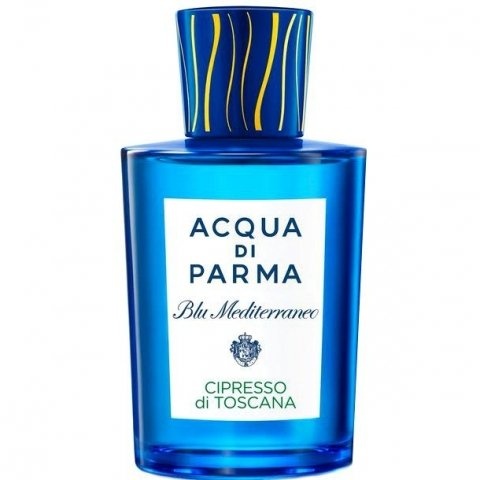



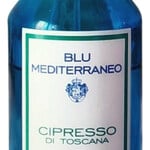
 Top Notes
Top Notes 


 Heart Notes
Heart Notes 


 Base Notes
Base Notes 










 Rojabird
Rojabird Tombbb
Tombbb